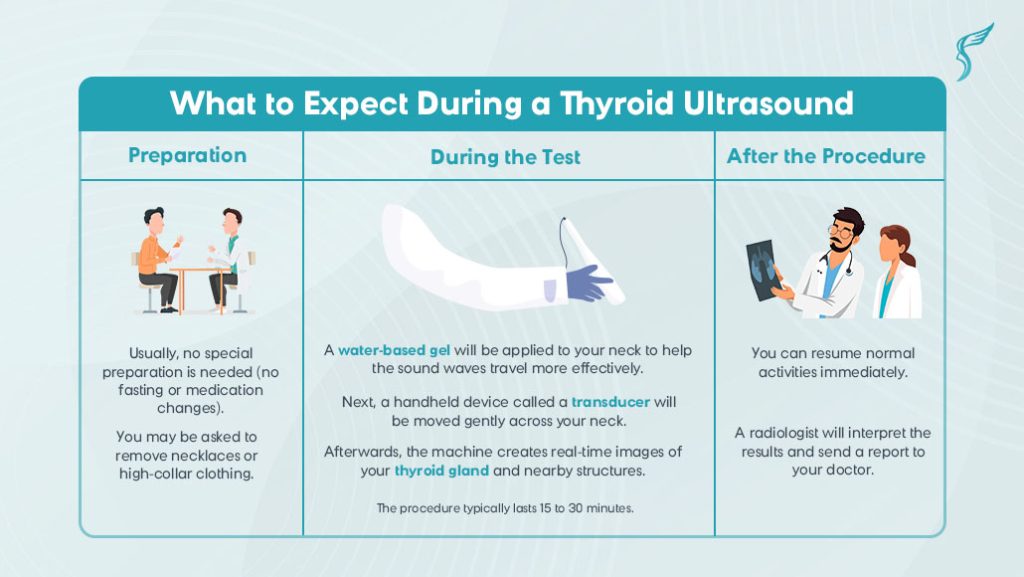The thyroid gland plays a vital role in regulating metabolism, energy levels, and overall hormonal balance. Found at the base of the neck, this butterfly-shaped organ can develop structural or functional issues that often go unnoticed.
When it comes to evaluating the gland, one of the most reliable first-line tools is a thyroid ultrasound. It is safe, effective, and non-invasive, making it a preferred choice for both doctors and patients.
But when is a thyroid ultrasound necessary, and why does it matter? By understanding its purpose, we can make clearer and more informed decisions about our health.
What Is a Thyroid Ultrasound?
A thyroid ultrasound uses high-frequency sound waves to produce real-time images of the thyroid gland. Unlike X-rays or CT scans, it does not involve radiation, making it safe for repeated use. The test typically takes between 15 to 30 minutes and provides immediate, detailed visualization of the thyroid’s size, structure, and blood flow.
Doctors rely on this procedure to investigate abnormalities such as lumps, enlargement, or irregularities detected during health checkups. This type of ultrasound has become a standard diagnostic tool in the Philippines due to thyroid disorders like goiter and nodules being relatively common in the country.
Reasons Why a Doctor Orders a Thyroid Ultrasound
1. Detecting and Evaluating Thyroid Nodules
One of the most common reasons why a thyroid ultrasound is needed is because of the presence of thyroid nodules. Studies show that thyroid nodules are found in 19–68% of adults worldwide, and while most are harmless, about 6.7–15% may be cancerous. An ultrasound helps by determining whether the nodule is solid or fluid-filled, assessing its size and shape, and identifying any suspicious features that may require further testing such as a biopsy.
2. Investigating an Enlarged Thyroid or Goiter
Another reason for this test is the presence of goiters, which refers to an enlarged thyroid. Goiters can be caused by iodine deficiency, autoimmune conditions such as Hashimoto’s thyroiditis, or other metabolic problems.
Through a thyroid ultrasound, it helps identify whether the enlargement is uniform (diffuse goiter) or contains multiple nodules (multinodular goiter). This distinction is important for guiding treatment.
In the Philippines, goiters have historically been linked to iodine deficiency, though fortification programs have significantly reduced cases in recent decades.
3. Assessing Thyroid Cancer Risk
Doctors may recommend an ultrasound if there is suspicion of thyroid cancer. While the majority of nodules are benign, certain features raise concern. These include nodules with irregular borders, microcalcifications, or rapid growth.

According to the Global Cancer Observatory, thyroid cancer is the seventh most common cancer among Filipinos. Fortunately, it also has one of the highest survival rates, with early detection leading to about 98% of patients surviving beyond five years.
Other reasons for a thyroid ultrasound include following up on findings from imaging tests, investigating symptoms such as swallowing difficulties or voice changes, evaluating abnormal thyroid lab results, and monitoring existing conditions like nodules, goiters, or thyroid cancer to track changes and ensure early intervention if needed.
Overuse, Limitations, and Patient Awareness
While thyroid ultrasound is safe and non-invasive, it is not always necessary. Some physicians may order it for non-indicated reasons, such as minor lab abnormalities or patient anxiety. This can sometimes lead to overdiagnosis, particularly of tiny, low-risk thyroid cancers that may never cause harm.
Patients should understand:
- Not every nodule requires biopsy.
- Most nodules are benign (~95%).
- Decisions should be based on established guidelines and doctor-patient discussions.
This perspective empowers patients to ask the right questions and avoid unnecessary procedures.

What to Expect During the Procedure
- Preparation: No special steps are needed.
- During the test: A technician or radiologist applies gel on the neck and uses a handheld probe to capture images.
- Duration: 15–30 minutes.
- After the test: Patients can immediately resume normal activities.
For suspicious nodules, a fine-needle aspiration (FNA) biopsy may be performed under ultrasound guidance. This ensures precise sampling and accurate diagnosis.
When your Thyroid needs a closer look, trust Shinagawa Diagnostic
For Filipinos who may be at higher risk of thyroid disorders due to regional factors such as diet and family history, awareness and early diagnosis can make a significant difference in health outcomes.
At Shinagawa Diagnostic & Preventive Care, we prioritize accurate diagnosis and patient education. Our team ensures that every thyroid ultrasound is performed with precision, guided by evidence-based practices, and explained clearly so patients feel informed and empowered in their healthcare journey.
Book an appointment now

Inquire



